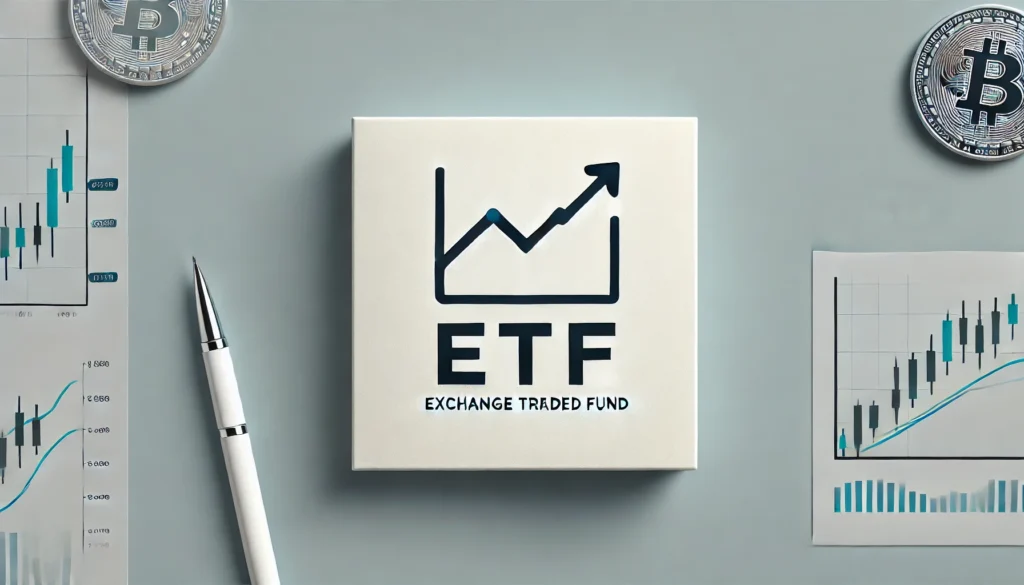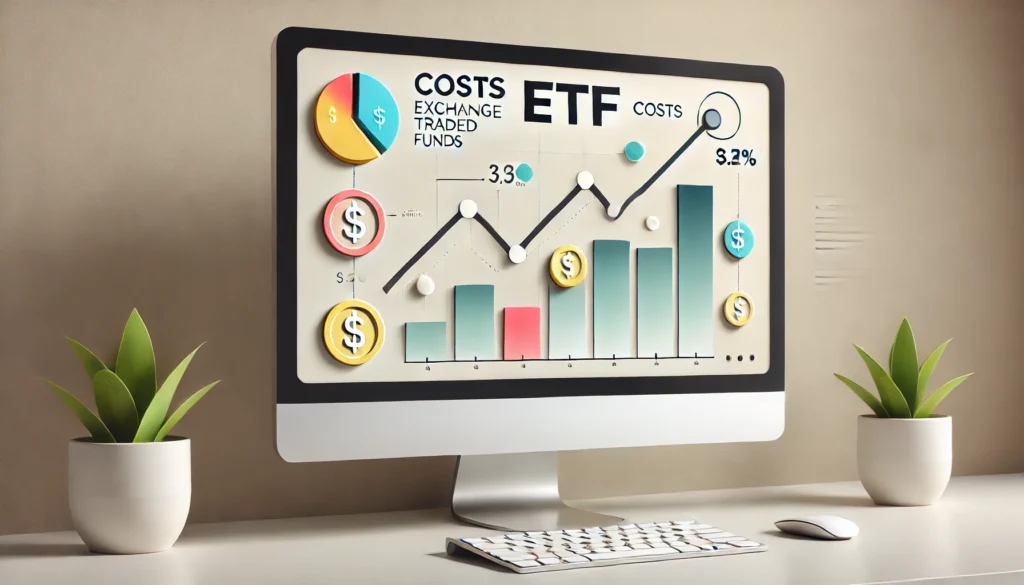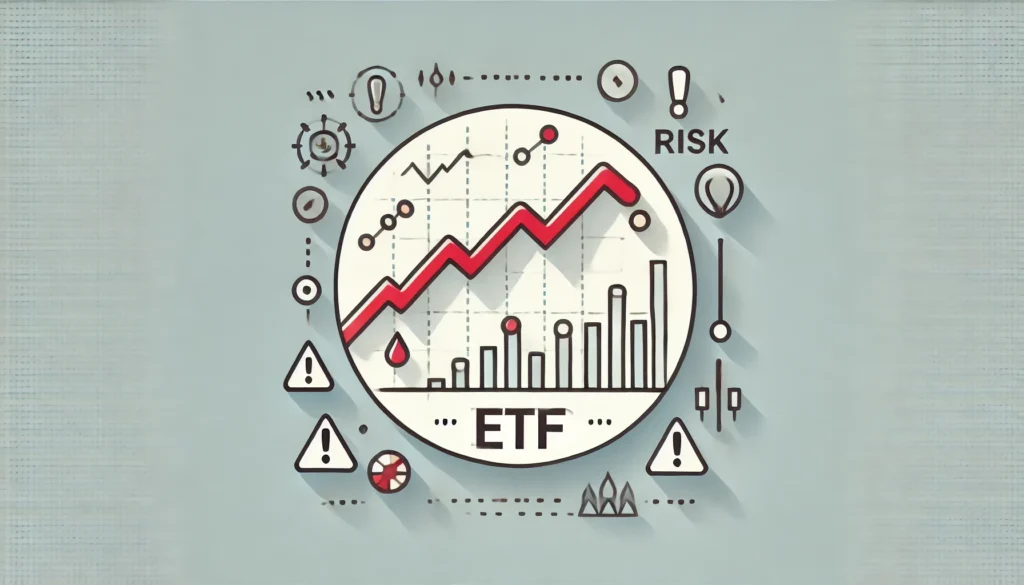
Exchange-Traded Fund or in briefly, ETF has transformed the financial landscape by providing a flexible and cost-effective means for individuals and institutions to participate in a wide range of assets. ETF combines the finest qualities of mutual funds and stocks to create a one-of-a-kind vehicle that provides diversity, liquidity, and transparency to investors. ETFs provide investors with the simplicity of stock trading, cheap expenses, and tax-efficiency benefits of mutual funds.
What is an ETF?
Exchange-traded funds, or ETFs, are similar to mutual funds. They invest in a broad range of securities, including stocks, bonds, and other asset classes. ETFs are traded on stock exchanges, much like individual stocks, and investors can buy and sell fund shares at market prices throughout the trading day. The price of an ETF’s shares varies according to the value of the underlying assets. ETF share prices change throughout the day as the ETF is purchased and sold, whereas mutual funds only trade once a day after the market closes. ETFs have lower expense ratios and need less broker fees than buying stocks separately.
Exchange-traded funds (ETFs) allow you to invest in many assets at once, and they often have lower costs than other forms of funds. ETFs are also easier to trade. However, ETFs, like all financial products, do not provide a one-size-fits-all answer. Evaluate them on their own merits, taking into account administrative charges and commission fees, ease of purchase and sale, fit into your existing portfolio, and investment quality.
How does ETF Work?
The fund provider holds the underlying assets, creates a fund to track their performance. Then it sells shares of the fund to investors. Shareholders possess a piece of an ETF but not its underlying assets. Investors in an ETF that tracks a stock index may get dividend payments from any dividend stocks in the index.
While ETFs are intended to replicate the value of an underlying asset or index — such as gold or a basket of equities like the S&P 500 — they often trade at market-determined values that differ from the asset. Furthermore, due to fees, an ETF’s long-term returns will differ from those of its underlying asset.

Let us summarize how ETFs work. An ETF provider evaluates a wide range of assets, including stocks, bonds, commodities, and currencies. It builds a basket of them under a unique ticker. Investors can purchase a share in that basket through their brokerage account, just as they would buy stock in a firm. Throughout the day, buyers and sellers trade the ETF on an exchange, much like stocks.
Types of ETFs
Exchange-traded funds may move like stocks, but they are more similar to mutual funds and index funds, which can differ substantially in terms of underlying assets and investing objectives. Below are some common types of ETFs.
- Bond ETF: Used to give investors with monthly income, the distribution is based on the performance of underlying bonds, which may include government, corporate, and state and local bonds, often known as municipal bonds. Bond ETFs, unlike their underlying products, do not have maturity dates.
- Stock ETF: A collection of equities that track a specific industry or area, such as automotive or foreign stocks. The goal is to give diverse exposure to a particular industry, which includes both top performers and new entrants with development potential.
- Sector or Industry ETF: Sector ETF will feature firms involved in that industry. Blackrock’s iShares U.S. Technology ETF (IYW) tracks the performance of the Russell 1000 Technology RIC 22.5/45 Capped Index and owns 1374 equities in the technology sector.
- Commodity ETF: Invest in commodities such as crude oil and gold. Commodity ETFs may help diversify a portfolio and protect against market downturns. Holding shares in a commodities ETF is less expensive than physical possession of the commodity.
- Inverse ETF: Inverse ETFs employ derivatives to short a stock. Shorting stocks allows you to profit from stock price drops. Inverse ETFs are ETNs, not genuine ETFs. An ETN is a bond that trades like a stock and an issuer, often a bank backs.
- Leveraged ETF: A leveraged ETF tries to deliver a multiple of the return of the underlying investments. If the S&P 500 increases by 1%, a 2× leveraged S&P 500 ETF will return 2%. These products employ loans and derivatives, such as options or futures contracts, to increase their profits.
How much does an ETF cost?
Exchange-traded funds’ costs can vary greatly, with share prices ranging from the single digits to the triple digits. That variety may seem frightening, but it also means there is an ETF for any budget. Before you invest in an ETF, you should consider how much money you are willing to spend.

When investigating ETFs, you should also evaluate the fund’s cost ratio, which represents the price charged to operate and maintain the fund. Since most funds manage ETFs passively, their expense ratios often remain modest compared to other forms of funds.
How to Invest in ETF?
Investing in Exchange-Traded Funds (ETFs) is a flexible and inexpensive approach to diversify your portfolio. Understanding the basic processes for investing in ETFs allows you to make educated selections that correspond with your financial objectives. Let’s look at the important measures you need to follow to begin investing in ETFs successfully.
- Set Investment Goals: Determine your investing goals, risk tolerance, and timeframe. This will assist you in selecting the most appropriate ETFs to meet your financial objectives.
- Research ETFs: Conduct extensive research to find ETFs that fit your investing plan. Consider the ETF’s underlying index, fee ratio, liquidity, performance history, and fund provider’s repute.
- Open a Brokerage Account: To purchase and sell ETFs, you must first open a brokerage account. Choose a trustworthy firm that provides a diverse selection of ETFs, reasonable fees, and powerful trading tools.
- Fund Your Account: Deposit money into your brokerage account. Make sure you have enough funds to buy the ETFs you’re interested in.
- Place an Order: Once your account has been funded, you can place an order to purchase ETFs. You can utilize the following sorts of orders: Market Order, Limit Order, Stop Order.
- Monitor Your Investments: Review your ETF holdings on a regular basis to verify that they are in line with your investing objectives. Keep track of market developments, economic indicators, and changes in the ETF’s underlying assets.
- Rebalance Your Portfolio: Rebalance your portfolio on a regular basis to retain the asset allocation you like. This includes purchasing or selling ETFs to ensure that your investment mix is consistent with your objectives.
Following these steps will allow you to invest in ETFs with confidence and take advantage of their benefits to establish a strong investment portfolio. Regularly monitoring and adjusting your assets will help you stay on track toward your financial objectives.
Benefits of EFTs
Exchange-Traded Funds have become a popular online trading option owing to their multiple benefits. Understanding these benefits might help you evaluate whether ETFs are a good fit for your investing plan. Let’s look at the major benefits that make ETFs an appealing choice for investors.
- Diversification: Investing in an ETF provides investors with exposure to a diverse variety of assets inside a single fund, lowering the risk associated with individual equities.
- Liquidity: ETFs may be purchased and sold on an exchange at market rates throughout the trading day, resulting in higher liquidity than mutual funds, which can only be exchanged at the end of the day.
- Cost-Effectiveness: ETFs often offer lower cost ratios than mutual funds. Furthermore, because they are passively managed and track an index, the management costs are often lower.
- Transparency: ETFs publish their holdings on a daily basis, allowing investors to know exactly what assets they possess, as opposed to mutual funds, which normally do so quarterly.
- Flexibility: ETFs may be used in a variety of strategies, including hedging, short selling, and margin trading, providing investors with greater portfolio management options.
By taking advantage of these benefits, you may improve your investment portfolio and work toward your financial objectives more effectively. Consider adding ETFs into your plan to fully benefit from what they provide.
Risks of EFTs
While Exchange-Traded Funds provide several benefits, it is critical to recognize the dangers associated. Understanding these risks can help you make better investing decisions and manage your portfolio more efficiently. Let’s look at the main hazards involved with investing in ETFs.

- Market Risk: ETFs, like all other investments, are subject to market risk. The value of your investment may change depending on the performance of the underlying assets.
- Tracking Error: Some ETFs may not accurately duplicate the performance of their benchmark index, resulting in a tracking mistake.
- Liquidity Risk: While ETFs are typically liquid, some niche or low-volume ETFs may have lesser liquidity, resulting in greater bid-ask spreads and trouble executing transactions at desired prices.
- Tax Implications: While ETFs can be tax-efficient, investors should be mindful of the tax consequences of buying and selling them, particularly in taxable accounts.
- Management Fees: Although ETFs are often less expensive than mutual funds, it is critical to analyze the expense ratio and any other costs connected with the ETF.
Understanding the various risks involved with ETFs allows you to handle your assets more sensibly. Understanding and managing these risks allows you to better match your ETF investments with your entire financial strategy. Always keep these variables in mind if you want to make educated decisions and maximize your investment returns.
Conclusion
Exchange-Traded Fund (ETF) has evolved as a significant instrument in the modern financial environment, providing a combination of flexibility, diversification, and cost effectiveness. They provide an easy approach for investors to obtain exposure to numerous asset classes and markets, which aligns with a variety of investing strategies and objectives. ETFs, like any investment vehicles, must be carefully considered in terms of both rewards and hazards. With a thorough knowledge, investors may efficiently incorporate ETFs into their portfolios to meet their financial goals.